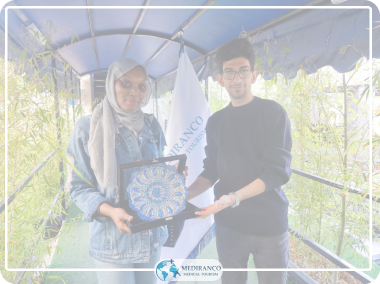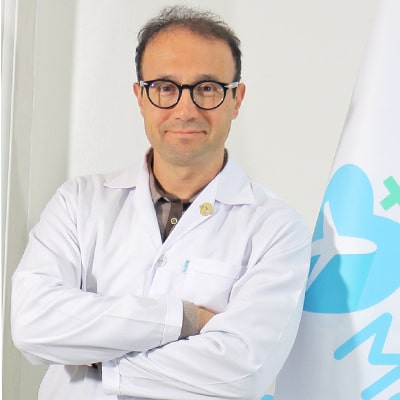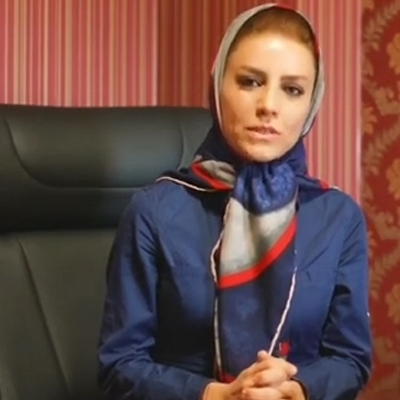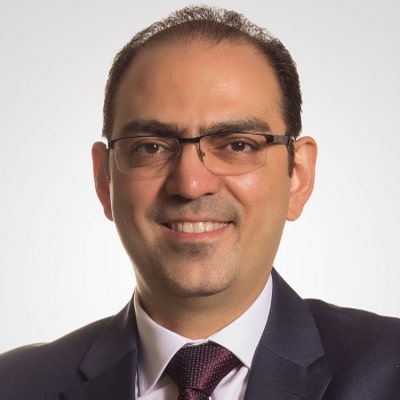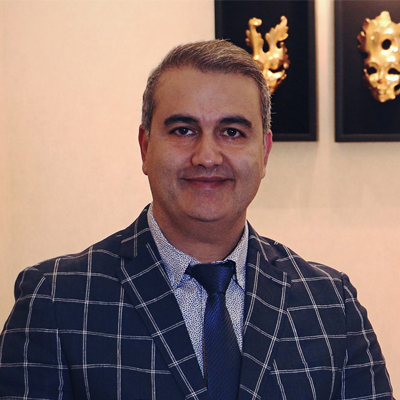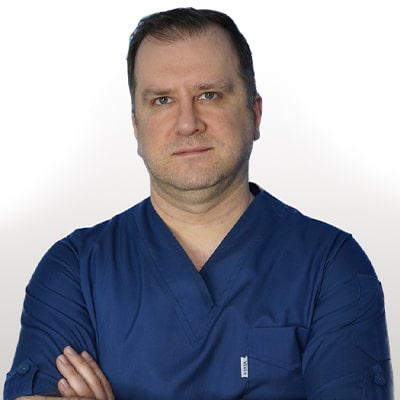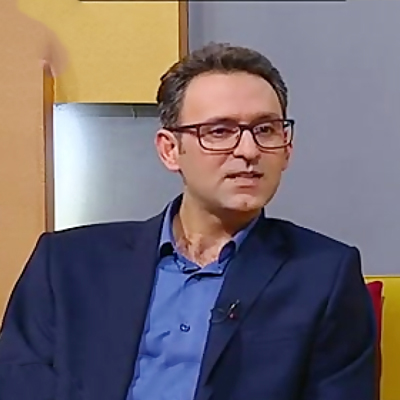Hair Transplant in Iran
In a hair transplant, grafts containing hair follicles are transplanted to the bald area as a surgical procedure to treat male pattern baldness. Hair transplant in Iran is the latest trend for those with unforeseen hair loss at younger ages and even those who want to alter their hairlines or grow an attractive mane.
We help you to double your beauty! Get in touch with our consultants…


Stay in Iran
7 days
Recovery time
7-9 days
Clinic Stay
4 day
Stay in Iran
7 days
Recovery time
7-9 days
Clinic Stay
4 day
- Packeges
- Videos
- B & A Photos
- Surgeon
- Hotels
- FAQs
What is hair transplant?
Why should I go for a hair transplant?
Hair transplant is becoming trendier every year. Most males have some degree of hair loss as they age; women are not exempt to this problem. People who experience hair loss are more self-conscious; in some cases, lack of self-esteem is a significant issue for them. A hair transplant is a solution that intrigues many those seeking a permanent way to stop their hair loss.
Is hair transplant safe?
Hair transplant surgery is typically safe when performed by a qualified, experienced board-certified plastic surgeon. Without a doubt, Iran is gradually becoming the center of the world’s cosmetic surgeries, and this quality has drawn many medical tourists to Iran to take advantage of its low-cost surgical services. Statistically speaking, Iran is becoming one of the best destinations for patients who want their hair transplanted.
Hair Transplant Packeges in Iran
Premium
3,340$
- Treatment visa
- Airport pickup
- Transportation
- All medications
- Medical interpreter
- Simcard with internet
- Medical Photography
- 24/7 on phone Translator
- 5 Stars Hotel
Basic
3,150$
- Treatment visa
- Airport pickup
- Transportation
- All medications
- Medical interpreter
- Simcard with internet
- Medical Photography
- 24/7 on phone Translator
- 4 Stars Hotel
Basic
3,150$
- Treatment visa
- Airport pickup
- Transportation
- All medications
- Medical interpreter
- Simcard with internet
- Medical Photography
- 24/7 on phone Translator
- 4 Stars Hotel
Premium
3,340$
- Treatment visa
- Airport pickup
- Transportation
- All medications
- Medical interpreter
- Simcard with internet
- Medical Photography
- 24/7 on phone Translator
- 5 Stars Hotel
Is a Hair Transplant Permanent?
A hair transplant is a surgical procedure that aims to restore hair growth by transplanting follicles from a donor area to the bald areas of the scalp. Generally, a hair transplant is considered permanent; however, it can be affected by lifestyle and medical conditions, so it is important to take care of the transplanted hair. In terms of results, a hair transplant should be seen as permanent, with the transplanted hair follicles lasting a lifetime. However, factors such as age, hormones, lifestyle, and genetics can influence the success of the procedure, so it is important to discuss any potential risks with your doctor beforehand. In terms of maintenance, it is important to follow a healthy lifestyle and avoid activities that could damage the transplanted hair, such as using harsh chemicals or heat styling tools, as well as avoiding excessive sun exposure. Additionally, a healthy diet and regular exercise can help encourage healthy hair growth and reduce the risk of scarring.
Romanian choosing Iran for a perfect Hair Transplant result
Others Video
Australian getting a Hair Transplant in Iran thinks it’s way better than you think
Australian getting a Hair Transplant in Iran thinks it’s way better than you think
Australian getting a Hair Transplant in Iran thinks it’s way better than you think
Australian getting a Hair Transplant in Iran thinks it’s way better than you think
Rhinoplasty in Iran before and after
Before
after


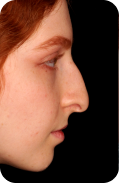

Before
after




Before
after




Before
after




What Our Customer Say
Iesna
GB
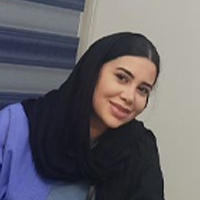
Mediranco is an excellent agency they helped me arrange my whole trip to Iran and surgery with Dr. Hooman Ganjehkhosravi. From the moment I arrived in Tehran, I was greeted with warmth and hospitality that made…
Lydia
GB

I had a guide called sara who was absolutely amazing. She was so caring and kind and made sure I was comfortable and safe throughout my trip. I really recommend any one using mediran to book with sara!
Mansoor
DK

My name is Mansoor from Denmark .I highly recommend this mediranco. Mr Hossain was very kind and Good person. The Company mediranco is very fast to response. Thanks mediranco
Amal
AU

I had an amazing experience with Mediranco’s service. Traveling to Iran on November 1st, 2023, for Gastric sleeve surgery was truly incredible. From the airport pick-up to a farewell dinner on my last day, the journey was exceptional…
Now, let’s have a look at the photos of our patients in Iran!






Dr Shahriar Yahyavi
+2000
Successful Surgeries
12
Years of Experience
Successful Surgeries
+5
Dr Mitra Manavi
+2000
Successful Surgeries
12
Years of Experience
Successful Surgeries
+5
Dr kasra sabeti
+2000
Successful Surgeries
12
Years of Experience
Successful Surgeries
+5
Dr Farzad Nikouseresht
+2000
Successful Surgeries
12
Years of Experience
Successful Surgeries
+5
Dr Asadollah Mahdavi
+2000
Successful Surgeries
12
Years of Experience
Successful Surgeries
+5
Best Arm Lift Surgeon Iran
Hair transplant methods at a glance

Hair transplant methods have evolved significantly over the years, offering viable solutions to combat hair loss and restore natural-looking hairlines. Two primary techniques dominate the field: follicular unit transplantation (FUT) and follicular unit extraction (FUE). FUT involves harvesting a strip of scalp from the donor area, typically the back of the head, and then dissecting it into individual follicular units for transplantation. On the other hand, FUE involves extracting individual hair follicles directly from the donor site using a small punch tool, leaving minimal scarring. Both methods require meticulous precision and artistry to ensure natural-looking results. With advancements in technology and techniques, such as robotic assistance and platelet-rich plasma therapy, hair transplant procedures continue to improve, offering hope to those seeking effective solutions for hair restoration.
Hotels

Shiraz Hotel
Tehran, crossroad of chamran and valiasr, parsian esteghlal international hotel
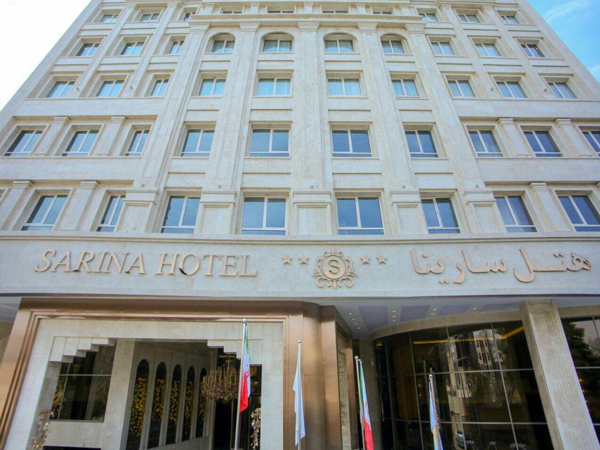
Sarina Hotel
Tehran, crossroad of chamran and valiasr, parsian esteghlal international hotel

SarayeAmeriha Boutique Hotel
Tehran, crossroad of chamran and valiasr, parsian esteghlal international hotel

Parsian Safaiyeh Hotel
Tehran, crossroad of chamran and valiasr, parsian esteghlal international hotel

Parsian Esteghlal Hotel
Tehran, crossroad of chamran and valiasr, parsian esteghlal international hotel

Parsian Azadi Hotel
Tehran, crossroad of chamran and valiasr, parsian esteghlal international hotel
How to Recover From Hair Transplant?
- Take time off work
Most patients take 7-10 days off work to recover from a Hair Transplant procedure. You will likely feel some discomfort and swelling during this time, so it is important to take it easy and rest.

- Follow your surgeon’s instructions
Guidance from your plastic surgeon is key post Hair Transplant. Adhere to their instructions meticulously for effective care. Your surgeon will provide details on cleaning the area, managing swelling and pain, and scheduling follow-up appointments. Keep your head elevated during the initial days to reduce swelling, and your surgeon might recommend a nose splint or cast for protection. Additionally, pay attention to your diet—following your surgeon’s advice on nutrition and fluid intake contributes to a smooth recovery. Trust the process and ensure the best outcomes by following your surgeon’s personalized care plan.

- Avoid strenuous activities:
You should avoid strenuous activities such as exercise, heavy lifting, and bending over for at least two weeks after the procedure. This will help to minimize swelling and prevent any damage to the delicate tissues in your nose.

- Take your medications as directed
If prescribed pain medication, take it as directed to alleviate any post-procedure discomfort. Also, to ensure the best results and prevent infections, diligently take the prescribed antibiotics. Timely and consistent medication intake is crucial, so stay on schedule and trust your surgeon’s advice for a smooth and successful recovery.

- Use cold compresses
Applying cold compresses to your nose can help to reduce swelling and discomfort. Be sure to follow your surgeon’s instructions on how often to use cold compresses and how long to apply them for.

- Attend follow-up appointments
Applying cold compresses to your nose can help to reduce swelling and discomfort. Be sure to follow your surgeon’s instructions on how often to use cold compresses and how long to apply them for.

- Avoid alcohol and smoking
Applying cold compresses to your nose can help to reduce swelling and discomfort. Be sure to follow your surgeon’s instructions on how often to use cold compresses and how long to apply them for.

Hair transplant cost in Iran
Iran has a significantly lower and more affordable starting price for hair transplants compared to other countries, at 600€. For instance, the cost of a hair transplant ranges from 4,000€ to 16,000€ in the United States and Europe.
Due to hair transplant in Iran cost lower expenses than those of other developed nations, hair transplant facilities can offer more economical procedures of equal or better quality. The good news is hair transplants and cosmetic surgeries are not the only affordable things in Iran; transportation, accommodation, daily costs of meals, and almost everything you can think of are much cheaper in Iran. Choosing Iran as your destination for your medical procedures is filling two needs with one deed!
Why choose Iran for hair transplant?
The decision to undergo a hair transplant in Iran is driven by a combination of affordability and high-quality care. Renowned for its advanced medical facilities and skilled specialists, Iran offers an enticing destination for individuals seeking effective solutions for hair restoration at a fraction of the cost compared to many Western countries. Despite the lower prices, the quality of care remains exceptionally high, with Iranian clinics equipped with state-of-the-art technologies and staffed by experienced surgeons who adhere to international standards. This combination of affordability and high quality makes Iran a preferred choice for those looking to address hair loss without compromising on results or safety. Whether opting for follicular unit transplantation (FUT) or follicular unit extraction (FUE) techniques, patients can expect meticulous attention to detail and personalized care throughout their journey. By choosing Iran for their hair transplant needs, individuals not only regain confidence in their appearance but also enjoy a cost-effective solution without compromising on the quality of care they receive.
Hair Transplant in Iran
Unlock the secret to luxurious locks with cutting-edge hair transplant procedures in Iran! Renowned globally for its top-tier medical facilities and skilled specialists, Iran offers an unparalleled destination for hair restoration. Experience the pinnacle of professionalism and affordability as you embark on your journey to reclaim a fuller, more youthful head of hair. With state-of-the-art clinics equipped with the latest technologies, including advanced FUT and FUE techniques, you can trust in the expertise of Iranian Mediranco surgeons to deliver natural-looking results tailored to your unique needs. Beyond the exceptional medical care, immerse yourself in the rich culture and hospitality of Iran, making your transformation a rejuvenating and unforgettable experience. Don’t let hair loss hold you back – discover the life-changing possibilities of hair transplant in Iran today!
what to know about hair transplant methods
Hair transplant procedures have revolutionized the field of cosmetic surgery, offering hope and confidence to individuals experiencing hair loss or thinning. Among the various techniques employed in hair transplantation, Follicular Unit Transplantation (FUT), Follicular Unit Extraction (FUE), Follicular Isolation Technique (FIT), and Direct Hair Implantation (DHI) stand out as leading methods. Each approach presents unique advantages and considerations, catering to the diverse needs and preferences of patients seeking restoration of their natural hairline and density. Understanding the principles and distinctions of these techniques is pivotal for individuals contemplating hair transplantation, empowering them to make informed decisions regarding their treatment journey. Let’s delve into the intricacies of these innovative methods and explore how they have transformed the landscape of hair restoration surgery.
FUT:
Follicular Unit Transplantation (FUT), commonly known as strip harvesting, is a traditional hair transplant method. During FUT, a strip of scalp containing hair follicles is surgically removed from the donor area, typically the back or sides of the scalp. This strip is then dissected into individual follicular units, which are implanted into recipient sites created in the balding or thinning areas. FUT requires sutures or staples to close the donor area, leaving a linear scar that can be concealed by surrounding hair. While effective, FUT may involve a longer recovery period and a higher risk of noticeable scarring compared to newer techniques like Follicular Unit Extraction (FUE). Despite these considerations, FUT remains a valuable option for individuals seeking hair restoration, particularly those with larger areas of hair loss where the efficiency of harvesting donor grafts is crucial. Consulting with a qualified hair transplant surgeon can help determine the most suitable approach based on individual needs and preferences.


FUE:
Follicular Unit Extraction (FUE) is a minimally invasive hair transplant method where individual hair follicles are extracted directly from the donor area using a specialized punch tool. Local anesthesia is administered for comfort during extraction. Once harvested, the follicular units are meticulously implanted into recipient sites in the balding or thinning areas of the scalp. FUE avoids the need for a linear donor incision, resulting in minimal scarring and a quicker recovery compared to traditional methods like Follicular Unit Transplantation (FUT). Patients may experience temporary redness, swelling, and scabbing post-operatively, but these usually subside within a week or two. Over time, transplanted hair follicles grow naturally, providing improved density and coverage. FUE offers advantages such as less noticeable scarring and the ability to harvest from various donor areas, including the beard and body. Consulting with a qualified hair transplant surgeon can determine candidacy and ensure realistic expectations for the procedure.
FIT:
Follicular Isolation Technique (FIT) is a specialized hair transplant method that combines the principles of both Follicular Unit Extraction (FUE) and Follicular Unit Transplantation (FUT). Unlike traditional FUE, FIT involves extracting intact follicular units directly from the donor area without creating any visible incisions or scars. This technique utilizes a precise mechanical device to isolate individual follicular units, preserving their integrity and viability for transplantation. FIT offers several advantages, including reduced risk of transection, minimal damage to surrounding tissue, and faster harvesting of grafts compared to manual FUE methods. Additionally, FIT allows for greater control and precision in selecting and extracting follicular units, resulting in a higher yield of viable grafts. With its innovative approach and promising results, FIT has emerged as a valuable option for individuals seeking natural-looking hair restoration with minimal downtime and scarring. Consulting with a qualified hair transplant surgeon can help determine if FIT is the right choice based on individual needs and preferences.
DHI:
Direct Hair Implantation (DHI) is an advanced hair transplant technique that offers precise and efficient follicle implantation, minimizing trauma to both the donor and recipient areas. DHI differs from traditional methods like FUE and FUT by utilizing a specialized tool called a Choi pen, which allows for the direct implantation of hair follicles without the need for recipient site creation beforehand. During DHI, follicular units are harvested from the donor area using a micro-punch tool, and then individually loaded into the Choi pen for implantation. This ensures precise control over the angle, depth, and direction of hair growth, resulting in natural-looking and aesthetically pleasing outcomes. DHI’s innovative approach reduces the risk of follicle damage and increases the survival rate of transplanted hairs. Additionally, DHI typically involves minimal downtime and scarring, making it an attractive option for individuals seeking effective and discreet hair restoration solutions.
Which one is better?
When comparing Follicular Unit Transplantation (FUT), Follicular Unit Extraction (FUE), Follicular Isolation Technique (FIT), and Direct Hair Implantation (DHI), several factors come into play, including effectiveness, recovery time, scarring, and cost.
FUT involves removing a strip of scalp for graft extraction, resulting in a linear scar, longer recovery, and higher risk of discomfort. However, it’s often more efficient for extracting a large number of grafts in a single session. FUE, on the other hand, avoids linear scarring by extracting individual follicles, offering a quicker recovery and less discomfort. FIT is similar to FUE but emphasizes preserving the natural direction of hair growth during extraction.
DHI, while less invasive and with less bleeding, tends to be pricier due to its specialized tools and techniques. It offers precise implantation and less trauma to the follicles, promoting higher survival rates and natural-looking results.
Ultimately, the choice depends on individual preferences, budget, and desired outcomes. Those seeking minimal scarring and faster recovery may opt for FUE or DHI, while FUT might be preferable for those prioritizing cost-effectiveness and efficiency in graft extraction. Consulting with a qualified hair transplant surgeon at Mediranco can help determine the best option based on specific needs and expectations
- As in any surgical procedure, an infection may occur. In addition, excessive bleeding or wide scars, sometimes called “stretch-back” scars caused by tension, may result from some scalp-reduction procedures.
- In transplant procedures, there is a risk that some of the grafts won’t “take.” Although it is normal for the hair contained within the plugs to fall out before establishing regrowth in its new location, sometimes the skin plugs die, and surgery must be repeated.
- Sometimes, patients with plug grafts will notice small bumps on the scalp that form at the transplant sites. These areas can usually be camouflaged with surrounding hair.
- When hair loss progresses after surgery, an unnatural, “patchy” look may result-especially if the newly-placed hair lies next to patches of hair that continue to thin out. If this happens, additional surgery may be required. Mediranco surgeons are among the most professionals with highest delicacy and experience, lowering any chance of side effects or complications.


Hair transplant recovery
Hair transplant recovery can be a lengthy process and requires a range of care and attention. Generally, it takes between three to four months for the hair follicles to take root and the transplanted hair to fully grow. The recovery process begins the day after the surgery, when the patient’s scalp is wrapped in a bandage. The patient can shower the day after the surgery, but must be cautious not to get the grafts wet. The bandage should be changed as needed, depending on how itchy or uncomfortable it becomes. The scalp should be kept clean and moisturized during the recovery process, and it’s recommended to use a mild shampoo and conditioner. Additionally, a gentle head massage can help the scalp heal more quickly. The patient should also abstain from consuming alcohol or smoking cigarettes for at least two weeks, as these activities can delay the healing process. Most patients can return to work within a few days, although strenuous activities should be avoided as they can cause further damage to the scalp. It’s important to keep in mind that hair transplant recovery is a gradual process, and it can take several months for the patient to see the full results. Despite this, the results are typically permanent and worth the wait.
Is a Hair Transplant Painful?
Fortunately, the answer is no—having your hair transplanted won’t hurt. This does not, however, imply that there is no discomfort at all. Hair transplants are no different from other minimally invasive or benign medical procedures in that they can cause some discomfort. Fortunately, the “pain” only lasts a short while. Most patients describe a hair transplant as being very simple and even mildly enjoyable, with almost no reported pain. Patients should be aware of what this entails and what level of discomfort they may experience prior to, during, and following surgery even though it may be a “easy” experience.
- Before surgery:
Before surgery, the injection of numbing agent is the sole source of discomfort for patients undergoing a hair transplant. Once the scalp is prepared and numbed, patients remain pain-free throughout the procedure. Numbing occurs twice: first in the donor area, where grafts are harvested, and then in the recipient area, where new grafts are implanted. Prior to surgery, the donor area is numbed in the morning after the scalp is marked, cleaned, and trimmed. Using a local anesthetic similar to that used by dentists, the doctor administers quick, superficial injections with a fine needle, resulting in minimal pain. Patients typically feel a brief “pinching” sensation before numbness sets in, which usually takes seconds to minutes.
- While Surgery
After the numbing medication is administered, patients will experience no pain during the extraction portion of surgery, as previously mentioned. In contrast, a hair transplant, when broken down, consists of two steps: removing the grafts from the donor and reinserting them in the recipient areas (the balding and thinning regions). Before making incisions and placing the grafts back into the scalp, the recipient area must be numbed, just like the donor area.
Following this, the entire scalp is completely numb from the front to the donor area in the back. Now the entire procedure can be performed pain-free. There won’t be any physical pain from the surgery itself, but the patient might want to reposition themselves and take breaks to stretch and move around to avoid the discomfort of sitting for an extended period. In the event that the patient experiences pain, they will alert the staff and the doctor will administer additional anesthetic injections.
- following surgery
After the anesthesia is administered, we already know that patients won’t experience any pain during surgery, but what about afterwards? What occurs when the numbing medication stops working? Fortunately, patients also report little to no discomfort following surgery. After the procedure is finished, the doctor will re-administer the anesthetic. This indicates that the patient will experience numbness for about three hours before it wears off and any potential discomfort may appear. The patient now has three hours to return to their accommodation, unpack, and—most importantly—start taking their post-operative pain medications. Your doctor at Mediranco will give you instructions on how to control possible feelings of discomfort during your recovery.
Who Is the Ideal Patient for a hair Transplant?
Men who have been losing their hair for more than five years because of male pattern baldness. Men with reasonable expectations who are aware that their hair loss may continue following surgery, even if they are taking prescription medication to slow it down. Some men must continue taking these drugs following surgery to save as much of their hair as possible. Men who have been balding for a long time, whose pattern has stabilized, and want to add some hair to make themselves look younger. Those who have lost their hair due to injuries or burns. Men and women who have lost their hair as a result of various cosmetic operations like facelifts.
Is there an ideal age to get a hair transplant?
Although hair transplants can be carried out on anyone above 18, it is advisable not to have a transplant until the age of 25. Younger men may not be the best candidates since their hair loss pattern may not yet entirely be determined. Generally speaking, most specialists in hair transplantation agree that the perfect age to undergo hair transplant surgery is between 30 and 40 years old.
What results can I expect?
Since hair transplants are far more effective than medications and other hair growth methods, the expected result is much more significant. It’s important to know that the transplanted hair will fall out between two and eight weeks after the procedure, and it’s normal. Most patients observe 60 per cent new hair growth between six and nine months after surgery; in some cases, this time might last longer up to three months.
how long will the results last?
Although the process of recovery and healing is time-consuming, the good news is; that the results of hair transplants are believed to be long-lasting and permanent.
Which type of procedure is best for me?
When deciding between FUE and FUT, talk to your surgeon about which treatment is best for you. During the appointment, you and your doctor should talk about your objectives and goals, as well as the number of follicular units needed to accomplish your desired coverage and the final design of your hairline. This will assist you and your surgeon determine which hair transplantation method is best for you.
Should I use medication after the procedure?
After your hair transplant, your surgeon will prescribe antibiotics and pain relievers to help you recover and avoid infection. They may also prescribe medicine to aid the growth of your transplanted hair and prevent future hair loss, depending on your situation. Our experts at Mediranco will examine your condition before, during and post-operation to provide you with the best medications needed.
Are hair transplants painful?
No, a hair transplant is not painful. The pain is almost negligible thanks to local anaesthesia and post-operative pain medications. While no surgery is entirely painless and some temporary discomfort is probable, most patients find a hair transplant a pleasant and easy experience.
Why Are Hair Transplants So Expensive?
The number of grafts required is one of the most important factors influencing the cost of a hair transplant. Hair transplants are lengthy procedures in which hair grafts are collected and transplanted to a new location. Since Iran’s prices are lower than those of developed countries, this enables hair transplant clinics in Iran to provide more affordable operations of comparable or even higher quality. Contact our 24/7 available team to get more details.


